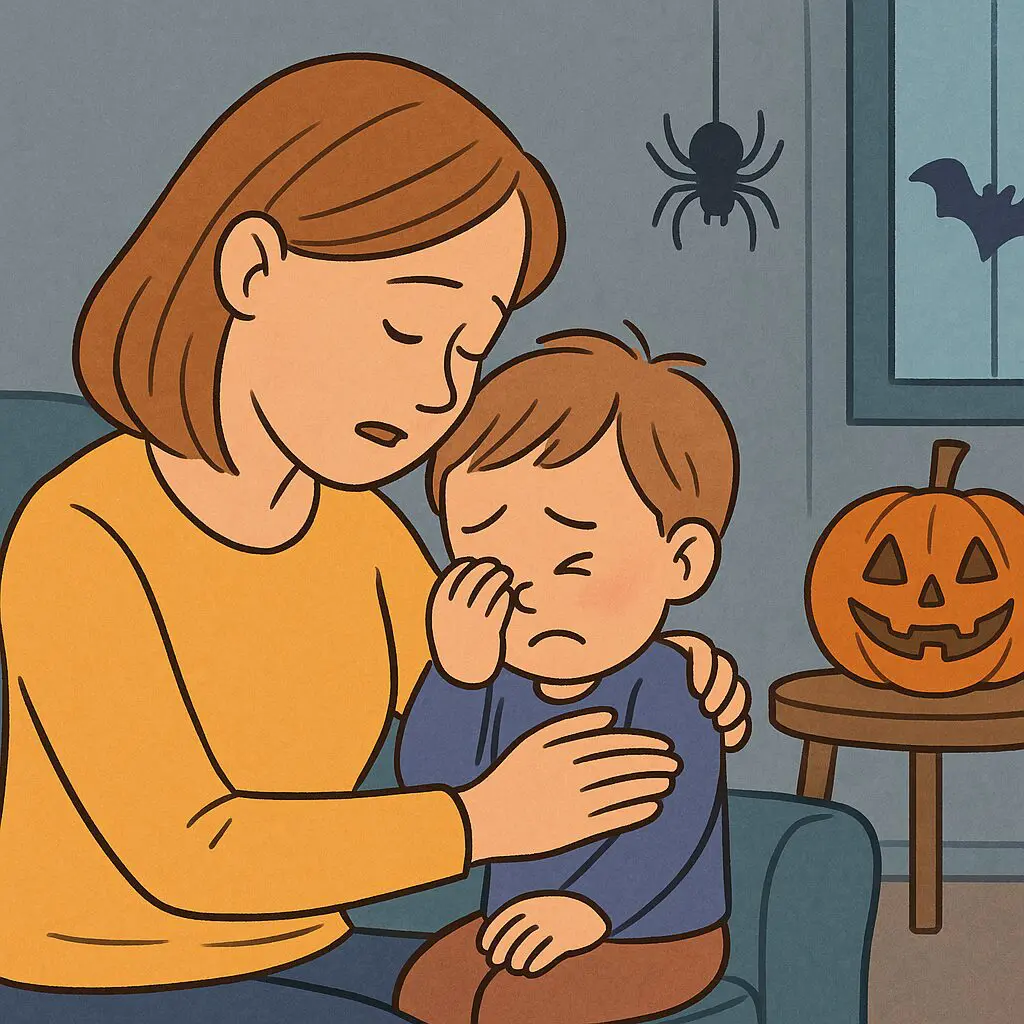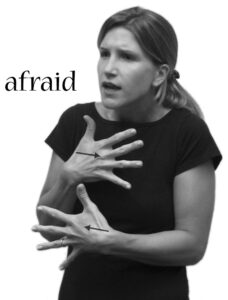
Why Toddlers Get Spooked—and How Signing Helps
Why Toddlers Get Spooked—and How Signing Helps
Understanding and Supporting Your Child’s Growing Fears
As Halloween approaches, you might notice your once-brave toddler suddenly becoming fearful of costumes, darkness, or spooky decorations. This change is completely normal! Around the second year, children’s imaginations grow faster than their ability to separate fantasy from reality. Understanding these fears—and helping your child express them—is key to building confidence and security.
That’s where the Baby Signs® Program can help. Teaching simple emotion-related signs like AFRAID, HELP, MOMMY, DADDY, or LIGHT gives little ones a way to communicate their feelings before they can find the right words.

How Signing Helps Children Cope with Fear
Using Baby Signs® empowers children to identify and share their emotions. When your toddler can sign AFRAID or HELP, they’re not only communicating fear—they’re learning that feelings are normal and can be managed safely.
Try introducing these signs as part of your daily routines:
-
AFRAID – For moments when something seems scary or surprising.
-
HELP – To ask for reassurance or comfort.
-
MOMMY / DADDY – For calling you during moments of fear.
-
LIGHT – To express wanting the light on.
Practice these signs while reading storybooks, singing songs, or talking about feelings. Pair each sign with a calm voice and gentle facial expression to show that fear can be discussed, not feared itself.
Why Fear Increases After the First Birthday
During the first year, babies rely mainly on caregivers to interpret their needs. As toddlers begin to walk, explore, and gain independence, they also become more aware of new sights and sounds—and realize that some things can be unfamiliar or overwhelming.
Their growing imagination is a beautiful milestone, but it can also make pretend things feel very real. A toddler may suddenly fear a barking dog, vacuum noise, or Halloween mask, even if they loved those things before.
Imagination Meets Reality
Around age two, children start to understand cause and effect—but their ability to reason is still limited. This is why a child might think the monster in a storybook could actually be hiding under the bed. Seasonal events like Halloween can amplify those feelings with dark lights, costumes, and loud sounds that feel unpredictable.
As adults, we can help by offering reassurance, structure, and tools for communication. When children can express what scares them, we can respond calmly and effectively instead of guessing.
How Signing Helps Children Cope with Fear
Using Baby Signs® empowers children to identify and share their emotions. When your toddler can sign AFRAID or HELP, they’re not only communicating fear—they’re learning that feelings are normal and can be managed safely.
Try introducing these signs as part of your daily routines:
-
AFRAID – For moments when something seems scary or surprising.
-
HELP – To ask for reassurance or comfort.
-
MOMMY / DADDY – For calling you during moments of fear.
-
LIGHT – To express wanting the light on.
Practice these signs while reading storybooks, singing songs, or talking about feelings. Pair each sign with a calm voice and gentle facial expression to show that fear can be discussed, not feared itself.
Real-Life Example
One mom shared that her two-year-old became terrified of the family’s vacuum. By teaching the AFRAID and HELP signs, her toddler began signing for help instead of crying when the vacuum came out. Over time, those big emotions turned into calm curiosity—and the fear faded away.
Building Emotional Safety Year-Round
Halloween might bring extra frights, but toddler fears appear throughout the year—thunderstorms, strangers, new experiences, or even bedtime. Encouraging communication through infant sign language helps your child feel seen, heard, and supported in every situation.
Whether it’s a loud noise, a spooky costume, or a shadow on the wall, you can help your child face fears with understanding and language.
Turn Fear into Connection
By introducing signs into your daily routines, you can turn fear into communication—and confusion into comfort.
This Halloween, practice signs like AFRAID, and HELP to reassure your little one that they’re understood and protected. You’ll not only ease their fears but also strengthen your bond and support emotional growth year-round.
👉 Learn more in our MORE Sign, Say & Play™ Feelings Class and explore the Safety Signs Poster Pack for everyday confidence and calm.
